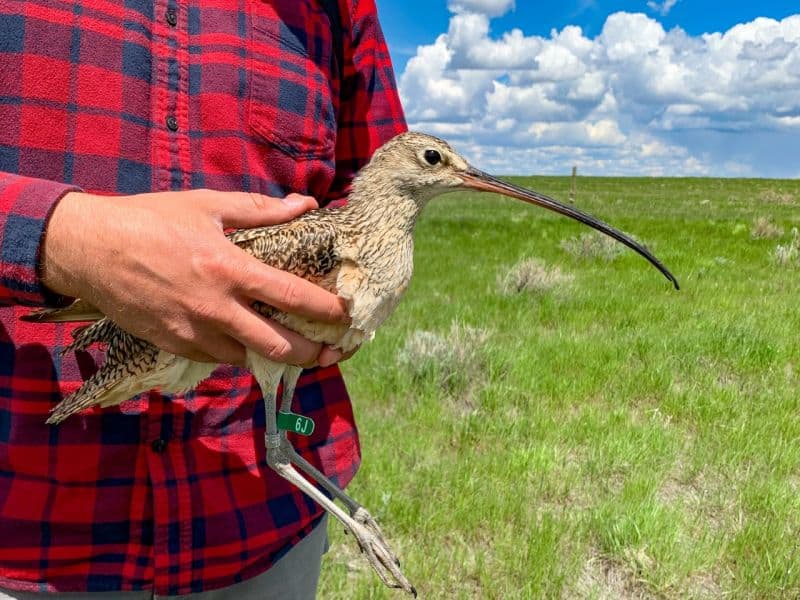Long-billed Curlews are an iconic grassland bird of the Northern Great Plains. Historically, curlews occurred across the NGPJV region of North Dakota but now their range is mostly restricted to Golden Valley, Billings, Slope and Bowman counties. Curlews continue to be found throughout other parts of the Northern Great Plains. Identifying key features the species depends on will help land managers to make decisions to stabilize and improve the curlew population. This species coexists on working grasslands, and they are an indicator of both grassland and agricultural land health.
Since 2015, the American Bird Conservancy (ABC) has implemented a landowner program focused on improving habitat for Long-billed Curlews and other associated grassland species. In 2018, with funding from the North Dakota Game and Fish Department (NDGF), ABC initiated a volunteer-led curlew survey program in North Dakota which has expanded, with private funding, to include South Dakota and Montana. In late 2021, Kevin Ellison, Program Manager for Northern Great Plains Program (and also long-time member of the NGPJV Technical Committee) contacted the NDGF about a potential project to deploy satellite transmitters on Long-billed Curlews. The NDGF was eager to participate in the project and provided a small grant via the Watchable Wildlife Fund (i.e., tax checkoff) for the transmitters. Tagging birds will increase our knowledge about how they are using breeding habitat and key landscape features, migration, and wintering areas.
Kevin enlisted Jay Carlisle, Research Director for Boise State University’s Intermountain Bird Observatory, as project lead because he has tracked over 100 adult curlews with satellite transmitters since 2013 from breeding areas in Idaho, Montana, New Mexico, and Wyoming. Including tracking data from breeding curlews in North Dakota would benefit this range-wide study while also yielding detailed data on habitat use and movement patterns useful to local partners. Jay and Kevin also had partners and additional transmitters they could deploy in South Dakota, increasing the sample of curlews tagged in the Dakotas.
In mid-May 2022, Kevin and Jay along with NDGF and ABC staff trapped and tagged five curlews in North Dakota and four curlews in South Dakota. As of mid-July, five curlews had already made it to Texas and three were in Mexico. Here are a few of their amazing journeys so far: a female left ND on 6/14/2022 and arrived on the south Texas coast on 6/20/2022; a male left ND on 6/22/2022 and landed in the Laguna de Santiaguillo in Durango, Mexico, on 6/29/2022; and a female left SD on 7/7/2022 and arrived on Mustang Island, Texas, on 7/9/2022.
For more information, check out this article and video on how the curlews were captured and tagged:
Lasting Look at Conspicuous Birds, North Dakota Outdoors, June 2022 https://gf.nd.gov/magazine/2022/jun
NDGF North Dakota Outdoors Webcast

